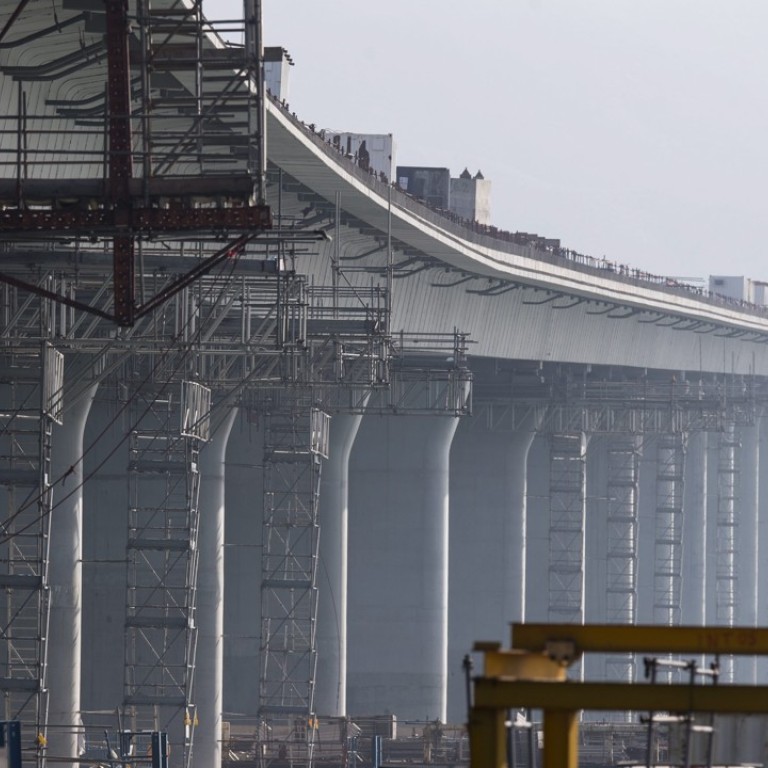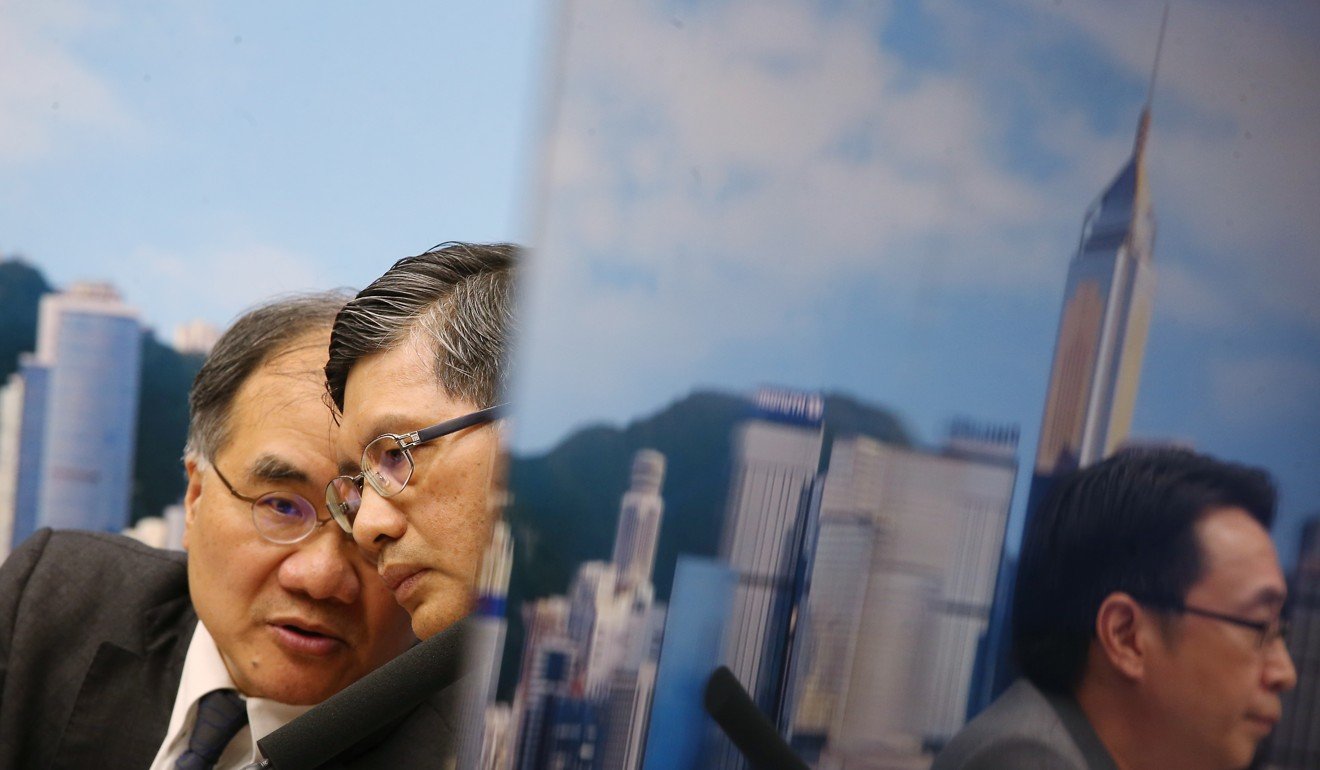
Officials admit problems with Hong Kong-Zhuhai-Macau bridge were missed a year ago
They failed to spot that tests on concrete samples from mega infrastructure project had been switched by a contractor
Officials have admitted they investigated safety concerns over a government contractor’s work at one of Hong Kong’s biggest infrastructure projects a year ago, but failed to unearth bigger problems.
“In that case, the quality of the concrete used for the bridge might have been compromised,” CEDD director Lam Sai-hung said.
The department itself investigated allegations last July that the testing time for concrete samples were being deliberately adjusted to give the false impression that work had been completed within the 28-day required time frame.
While referring this irregularity to the ICAC for investigation, the department conducted its own review of the contractor’s test records, but failed to spot the bigger problem of concrete samples being switched. The contractor has yet to be named officially, but has been identified by other sources as Jacobs China, under the US-based Jacobs Engineering Group.
Our assessment was that the performance discrepancy was little so this would not affect the quality of the concrete
“Our assessment was that the performance discrepancy was little so this would not affect the quality of the concrete,” Lam replied, when asked why the CEDD had not conducted follow-up tests on the bridge structure after coming across the suspicious time records.
The contractor has yet to respond to inquiries, but its website states it took on a HK$85.2 million project for the CEDD to provide management and operating services for the government laboratory in Siu Ho Wan on Lantau.
Jacobs China has also worked on another mega project for the government – the Hong Kong section of the express rail link.
But officials played down concerns about similar safety concerns, saying the parties concerned had been alerted to the bridge problem.
The government has yet to clarify exactly which parts of the bridge project could be affected, only saying the use of concrete during the period in question involved the Hong Kong Link Road, boundary crossing facilities and the link road between Tuen Mun and Chek Lap Kok.
Director of Highways Daniel Chung Kum-wah did not give a direct answer when asked whether part of the bridge would need to be demolished and rebuilt – the worst-case scenario painted by experts.
“To ease public concerns, we are now actively conducting ‘body checks’ on the key locations of the bridge’s structures between early 2015 to mid last year,” he said. “Up to now, all the testing results show that the tested structures are all in compliance with the required standard ... If any concrete structures fail the tests, reconstruction may not be a must. There are several ways to address the defects.”

An independent consultant will be appointed to help conduct concrete tests, which are expected to be completed by the end of next month.
Acting Secretary for Transport and Housing Yau Shing-mu said the long-delayed and overbudget mega project would be completed on schedule by the end of the year, regardless of the scandal.
“The rest of the work will be carried out on schedule and according to plan ... We will make sure that the bridge’s structures are confirmed safe and sound before it can be opened for use,” he said.
Democratic Party lawmaker Lam Cheuk-ting said he was deeply disappointed by the government’s account as it still failed to pinpoint which parts of the bridge may have been compromised.
“The government has seriously underestimated the severity of the irregularities. That is why it failed to detect a bigger problem involving the use of fake concrete samples. If it had detected this problem last year it could have done a lot of damage control,” he said.


